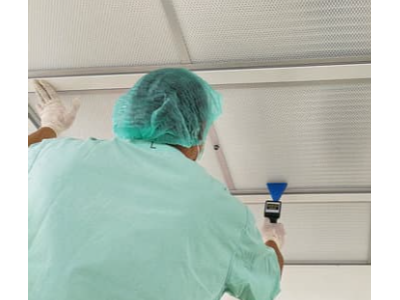
Lab Hoods and HVAC Checks
Lab Hoods and HVAC Checks
Are you wondering what a fume hood is? It is a ventilated mechanism that captures dangerous fumes, gases, and vapors. The enclosure is well-ventilated, so the toxic fumes do not leak. It protects the laboratory workers, researchers, and scientists from breathing in the deadly fumes. Therefore, a fume hood is essential in collecting harmful air contaminants. Today, we discuss how a fume hood works and how its system checks create a safe working environment for the employees. We recommend the following practices:
Fume Hood Inspections
Mechanical Testing Inc. performs detailed fume hood inspections to reassure their optimal performance. The analysis takes place whenever the client requests them. The common test includes face velocity and sound. Furthermore, Mechanical Testing Inc. also checks for contaminants while monitoring their performance simultaneously. In addition, we also observe VAV reading where necessary.
MTI, will also monitor the fume hood operational controls upon observation. These include plumbing and light. Other crucial variables for fume hood inspections are its sash, corrosion levels, and baffles.
We suggest performing a fume hood inspection after studying its previous records. The log will guide the way of the last ill-performing components and other mechanisms which may have worn down over time. Therefore, the fume hood owner must closely observe its status. We will inform you immediately if the hood fails the inspection and retests it upon reinstallation or repairs.
ASHRAE 110
ASHRAE 110 is an important testing standard that has been put in place to monitor HVAC internal working. It applies in multiple situations, such as grand industrial operations or personal use. ASHRAE 110 was introduced by global experts in the leading field of lab testing. It is a reference for design layout to promote ventilation in a closed setting when dealing with air contaminants. ASHRAE 110 considers air flow from air conditioners and other heating equipment.
The result is measured against air quality, employee comfort, and efficacy. ASHRAE 110 is an agreeable standard to measure health standards for researchers when interacting with chemical-related machinery. Dominantly, ASHRAE 110 is related to equipment handing and maintenance that do not exceed its professional boundaries. ASHRAE 110 is applied with additional standards such as OSHA, employee training, and sensor use.
Safety of Workers
Mechanical Testing Inc. recommends the following tips to optimize the employee safety of workers who work with fume hoods.
- The employees must keep their heads out of the sash. The sash is present to prevent the toxic gasses from escaping.
- Take eye protection very seriously. The researchers must always wear goggles and other spectacles to maintain visibility.
- Do not move too much around the fume hood. Limit your activities as unnecessary movement may cause the fume hood to leak toxic airflow.
- Keep the fume hood away from tight places. Blocking the exhaust pipes will result in the fume hood working overtime to process the fumes.
- The lab employees must keep everything at least six inches away from the opening of the sash to prevent unfortunate spills.
- The researcher must close the sash each time they are done working. Moreover, properly storing the chemicals is also a vital responsibility.
- The lab workers and researchers must be well-aware of the exit route in case of accidents
HVAC system check
The ventilation of a building or a lab is one of the most expensive investments in the construction industry. The pipes regulate airflow and keep everything running as smoothly as possible. Here are a few parameters of the HVAC system check for a durable service:
- HVAC system checks begin with checking the electrical component. Quality assurance dictates the connections are not loose or faulty.
- Motors will be lubricated. Moreover, the belts are checked too. The engines are oiled if they have been working overtime.
- Dust is removed from blower components. The step results in even air distribution that improves air quality. As a result, less dust settles in the parts too.
- The HVAC system check may also require the replacement of air filters. It will eliminate reduced efficiency and faster processing of air quality.
- The quality assurance expert will also observe the temperature drop as part of the HVAC system check.
The importance of Fume hoods and HVAC system checks
A laboratory is a busy place of work. The employees are frequently interacting with chemicals and other toxic compositions. Therefore, fume hoods and HVAC system checks are undeniable in the industrial and forensic worlds.
A fume hood is a crucial part of the HVAC system that protects the individuals who may or may not be working with flammable chemicals. It keeps the general public safe by preventing toxic chemicals from spreading. Here are a few scenarios where fume hoods presence is evident
- There is a probability of inhaling toxic fumes such as vapors, radioactive presence, and harmful powders.
- Industrial procedures cause chemical reactions to explode or change pressure violently.
- Toxic vapors can result in fire.
- The work results in an unpleasant odor that causes nausea or hurts lung tissues.
HVAC System checks
HVAC system checks will ensure the air improves and the parts remain operational for a very long period of time. The inspection will also monitor the efficiency to counteract its operations in emergencies. A thorough HVAC inspection examines the ventilation, heating, and cooling equipment.
You may need an HVAC system check before buying or purchasing a property. The inspection is also a wise idea if the building has remained empty for a while. The demand for HVAC inspections has increased manifold since the coronavirus pandemic to ensure safety.
How Often Should a Fume Hood Be Inspected?
The frequency of fume hoods is under the OSHA organization. It encompasses lab operations and internal design. According to ASHRAE 110 and OSHA standards, fume hood inspection is primarily concerned with monitoring and observing the exhaust. Mechanical Testing Inc. suggests getting the fume hoods checked at least once in three months. The next reevaluation is subjected to the current state of internal components.
On the other hand, operators and technicians must check the fume hood daily for blocked airflow. They must remove large items out of the way. In addition, the sash must remain closed at the protective height when interacting with the machinery.
Contact Mechanical Testing Inc. today.
Employee safety is paramount. Therefore, Mechanical Testing Inc. is a professional in all kinds of fume hood testing. We adhere to all provisions and particulars mentioned in ASHRAE 10. Hire Mechanical Testing Inc. today to check and authenticate your fume hoods. We will provide a detailed report to certify its use. For more queries, contact Mechanical Testing via phone 518-450-7292 or info@mechtest.com.




